Warning:
When you modify the circuit as described below so that it works "properly" it will try to destroy a LiPo battery. This is because you are applying 5V to the battery when you should only apply 4.2V absolute maximum.
With R1 = 5 ohms you will be able to supply about 150 mA at 4.4V and about 100 mA at 4.4V. This is well outside the safe spec of essentially all LiPo batteries that you will use and a "vent with flame" incident is a possibility.
Your design needs to ensure that the voltage applied to the battery does not ever exceed 4.2V. You can PWM switch a higher voltage to reduce it to 4.2V max if you filter the PWM so the battery never sees a voltage above 4.2V. If you eg PWM switched 5V at 84% duty cycle the mean level would be 0.84 x 5V = 4.2V. But, if you applied this PWM signal to the battery directly the 5V peak level would be likely to cause damage.
LiPo charging ICs are readily available at a reasonable cost. You are liable to be better off using one.
Relying on the USB port to limit current is an invitation to flaming destruction of your battery, or more. While a port may be specified to deliver 500 mA to one USB socket, it may be capable of supplying several amps in some cases. That plus over voltage on the battery is a formula for fireworks.
The problem with the existing circuit:
Q1 & Q2 form a "Darlington pair". The output voltage cannot be more than 2 x Vbe drops below V2 as each base emitter junction must drop Vbe of about 0.6 Volt for the transistor to turn on.
V2 = 5V
Q1e = 5-0.6 = 4.4V
Q2e = Q1e -0.6 = 4.4 - 0.6 = 3.8V.
In practice you are getting somewhat less due to higher Vbe values.
A solution is to replace Q1 and Q2 with a PNP transistor (call it Q3) with emitter to R1, collector to R3 and drive the base via R2. Now the transistor will be on when V2 is low. Or you can use a P Channel MOSFET with source to R1, drain to R3 and gate to V2.
Voltage limiter:
If building your own charger, you need to limit maximum battery voltage.
My answer here shows how to build a low cost precision clamp circuit to limit battery voltage.
Adjustable voltage clamp - see reference above for details.

As an indication of how simple an IC based charger can be, as lonhg as you can obtain the ICs, then if you want to build your own Lithium Ion / LiPo charger for up to 500 mA charge rate then using the MCP83831 / MCP83832 charger IC is a very easy and economical way of doing so. Data sheet here
It can literally be as simple as this circuit
 .
.
For more details on this see my answer to this stack exchange question.
The ICs are available in stock from Digikey for $US0.68/1 and $US0.42/100.


 .
.